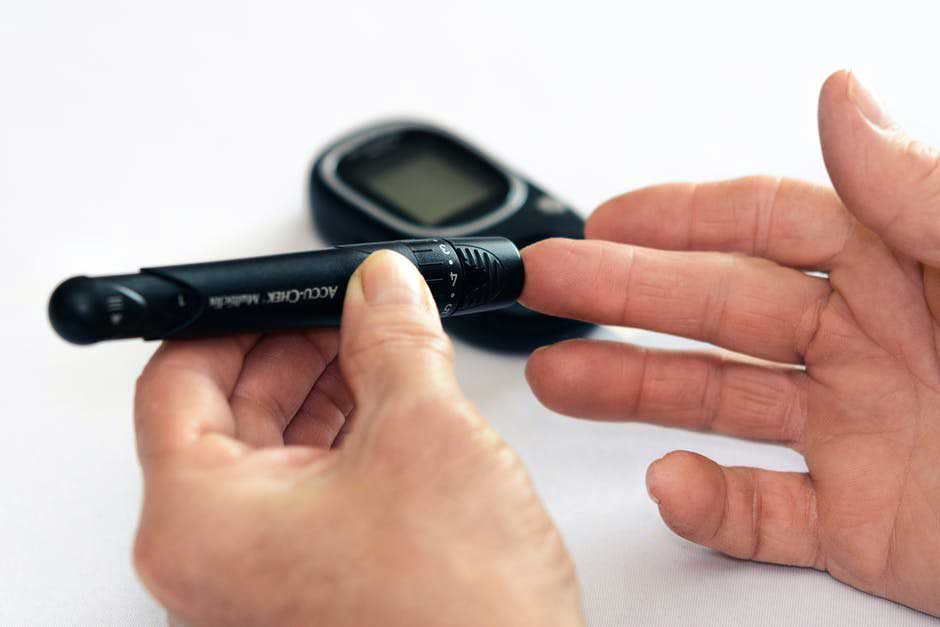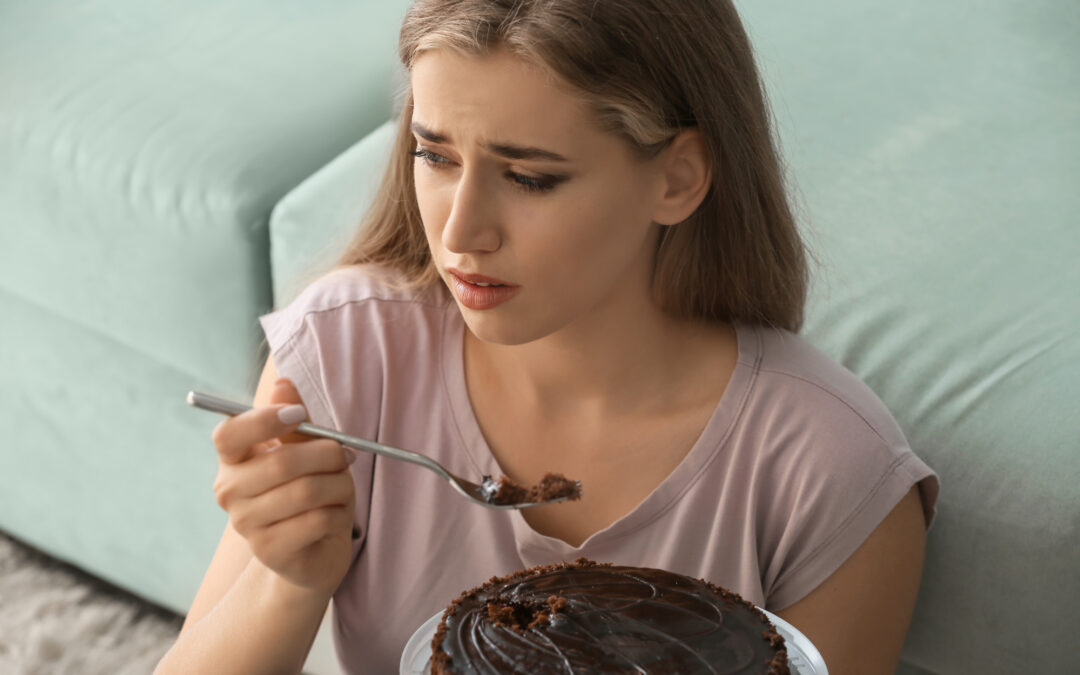
by Ingredia USA | Mar 9, 2022 | Stress Management
What’s the correlation between music and stress? The past two years have been historically stressful for many people.
Between a global pandemic, political upheaval, catastrophic weather events, and interpersonal drama, people are more stressed than they have ever been. Therapy, meditation, yoga, and other stress-relieving techniques are gaining in popularity.
With that in mind, it makes sense that music for anxiety and stress is getting attention. That’s why we’ve assembled a guide to the connection between music and stress. Let’s get started!
1. Music Provides Connection
Bonding with other people is difficult. Depending on where you live, you may still be worried about the pandemic. And navigating stresses around work, family, friends, and other relationships makes connection difficult.
This is especially true in the modern age when scientists say that we are suffering from a lack of interpersonal connection. That’s why music is the universal language—you can connect with anyone over their love of the same band, artists, genre, or performance.
Relaxing music for anxiety and stress is different for everyone. If you want to connect with people who love the same music you do, your ‘calming music’ doesn’t need to be classical jazz. Whether you love country, hip-hop, or pop, any music to relieve stress and anxiety can be effective.
2. Music Is a Distraction
Sometimes, you need to work through your feelings. Therapists sometimes refer to this process as ‘sitting with your feelings.’ There may not be concrete work, but feeling them—as opposed to distracting or stuffing them down—is crucial to the healing process.
Conscious processing isn’t the only way to deal with them, however. Instead, being able to ‘feel your feelings’ through music is important. That’s why we tend to turn to a Taylor Swift album or an Adele single during times of heartbreak.
The music is sad, so it compounds our own feelings of sorrow or heartbreak. This provides a sense of camaraderie, but it’s also a distraction. Hearing how someone else processed their feelings provides an alternate view of the situation.
When you’re distracted, your body is no longer in fight-or-flight mode. Instead, you have a chance to calm down, think about something else besides your breakup or toxic job, and take a time-out from your own emotional or mental issues.
Whether you choose classical music for stress and anxiety or choose to jam out to Broadway show tunes, any type of distraction can help. Music that you aren’t familiar with can sometimes be better since it forces your brain to tune in and pay attention.
3. Music Reduces Cortisol Levels
Cortisol is sometimes known as ‘the stress hormone.’ It triggers a fight-or-flight response in your body, which is good for immediate survival. This reaction helps people exhibit superhuman strength in crisis, run farther than they ever dreamed, and survive the predator-prey situations our ancestors experienced.
Today, though, cortisol can often do more harm than good. If you’re in a state of chronic stress, your body is constantly releasing cortisol. This may leave you emotionally drained and exhausted.
When you listen to calming music to reduce stress, your cortisol levels often drop. The human body wasn’t made to maintain extreme fight-or-flight responses over long periods of time.
But when you’re grieving, or going through a breakup, or staying at a toxic job, that’s exactly what your body does. Listening to music to relieve stress and anxiety can provide small patches of relief to help you get through the day.
4. Music Slows You Down
If you’re a big fan of rock or hip-hop, listen to those genres! But there’s still an argument to be made about classical music for stress and anxiety.
When you listen to calming genres, such as classical music, indie music, or other slow music, your body calms down. Your body’s biological processes, such as breathing and heart rate, often react to the music you’re listening to.
When your breathing slows and your heartbeat is beating normally, you will feel less stressed. This gives you an opportunity to relax on a biological level, not just a mental or emotional one.
5. Music Sparks Creativity
Music to relieve stress and anxiety is a great idea because it sparks creativity. Human beings weren’t made to exist in a constant state of production. Instead, taking time to be creative, use our imaginations, and make things is crucial.
Creativity is often emphasized for children. Rather than considering it childish, taking creativity into our adult lives is massive stress relief. There’s no ‘wrong way’ to be creative, which lowers the stakes and associated stress with everyday life.
That’s why listening to music can help spark your creativity. Whether it’s an instrumental piece or there are lyrics involved, music is meant to tell a story. Humans are communal, storytelling creatures, and hearing someone’s story can help you decide to tell one of your own.
Whether you make your own music, tell verbal stories, draw, or simply enjoy imagining stories in your head, music prompts the creativity that can distract you from ‘the real world.’ If you’re looking to reduce stress and anxiety, music is the way to go.
The Connection Between Music And Stress
Music and stress are associated together because one helps reduce the other. Whether you prefer old country classics or new rap music, there’s something for everyone.
Take the time to experiment a little when finding the genre or artist that really calms you down. After all, there’s no reason to subject yourself to elevator music just because you think it ‘should be’ calming. In fact, listening to music you hate will only raise your stress levels—not reduce them.
Being able to holistically care for yourself, through music, a healthy diet, and the right supplements are also good ways to reduce stress. If you’re interested in learning more about being able to holistically take care of yourself, contact us today! We can help.

by Ingredia USA | Mar 4, 2022 | News & Press, Stress Management
After conducting 9 clinical studies on more than 500 people, we wanted to address the primary goal of all our customers, consumer satisfaction.
Last year:
– We have recruited 300 people worldwide in three regions: the United States, France and China.
– We applied rigorous methodologies using validated questionnaires and partnered with BioMerieux for well-known expertise in this area.
– These 300 people were asked to try Lactium® at 300 mg/day for 30 days, either as a sign of stress or as a sign of sleep disorders.
We are proud to announce that we are getting results and that our overall satisfaction score is 78%. It is fairly evenly categorized as follows:
- 78% in the stress indication
- and 77% in the sleep disturbance indication.
Contact us for more information on this study and how to use it!

by Ingredia USA | Jan 26, 2022 | Blood Sugar Management
Diabetes is a worldwide threat to personal health, with 34.2 million people diagnosed just in the United States, according to the CDC. Regardless of economic status or residence location, statistics show just how widespread this disease is.
The good news is, there are many things you can do in your lifestyle to prevent diabetes. A prediabetes diagnosis is one of major the risk factors for type 2 diabetes, and it can be motivation for you or a loved one to make a change.
Creating a prediabetes diet plan is one of the steps you can take to protect your health and prevent a future diabetes diagnosis. A balanced, nutritious diet will help keep you on track and might motivate you to make changes in other areas of your life as well.
If you’ve been diagnosed with prediabetes and don’t know what your next step should be, we’re here to help. Keep reading to learn how a diet plan can help you and how to create one that fits your lifestyle.
What Is Prediabetes?
Whether your doctor told you that you may be at risk for diabetes or you’ve been recently diagnosed with prediabetes, you may be looking to learn more about what prediabetes means.
Prediabetes is a condition of high blood sugar levels, but not high enough to be considered levels of type 2 diabetes. This is why prediabetes is often a clear indication of risk for type 2 diabetes and motivates many people to start making a change.
Some risk factors include lack of physical activity, a family history of diabetes, and age of 45 years or older. A blood sugar test is one way to test for prediabetes. Early detection and diagnosis give you even more of a chance to change your lifestyle and prevent further complications.
Prediabetes Diet Plan for Diabetes Prevention
Eating habits are one of the most important lifestyle changes you can make to prevent diabetes. But don’t worry, creating a diet plan to reverse prediabetes does not have to mean removing everything you enjoy from your diet.
A prediabetes diet plan should have three balanced meals a day, consisting of plenty of nonstarchy vegetables, lots of fruit, whole grains, and proteins such as fish, beans, and eggs.
Some good vegetables to include are leafy greens, tomatoes, mushrooms, carrots, brussels sprouts, zucchini, eggplant, and cucumbers. The great thing about vegetables is that whether you have them fresh or frozen, they have the same nutritional value.
Some seafood that offers healthy proteins and fats include salmon, shrimp, and tuna. Beans also offer protein as well as fiber, including lentils, kidney or garbanzo beans, and soybeans. Another great source of protein is products made from soy such as tofu or other plant-based meat substitutes.
Whole grains that you can choose for healthy carbohydrates include whole-wheat bread and cereal, brown rice, or quinoa. Try to avoid too many starchy vegetables like potatoes and sweet potatoes, but it’s important not to completely cut them out of your diet.
You can also use dietary supplements, such as Pep2Dia, which can help naturally manage blood sugar levels. You can take this before your meals without worrying about any future side effects.
Fitting a Diet Into Your Lifestyle
As part of this diet, try to avoid sugary drinks and focus more on hydration. Water is essential to any healthy lifestyle, but it can be hard to make water the only thing you drink. A great way to spice up your hydration is adding fresh fruit to your water such as lemon or lime, or even cucumber and mint.
Instead of getting your sugars from drinks that will not keep you full, you can try to have a bowl of fruit instead, sure to keep you fuller for a longer time.
You also may want to focus on decreasing your portion sizes. This is where that moderation comes in. Intuitive eating can be a helpful tool for this, which means you don’t have to completely cut out those foods that you love!
This might look like eating only half of a portion at a restaurant and saving the rest or eating only when you’re hungry rather than eating out of boredom or coping with emotional eating.
If you’re thinking of starting a prediabetic diet or have recently started one, it’s important to be sure you can fit it into your lifestyle. If you’re having a hard time sticking to it because it’s so drastic from what you were eating before, you’re much less likely to stick with it.
It’s important to keep the foods you love in your diet, just in moderation. Having those foods whenever you’re craving them rather than restricting yourself can prevent you from overeating them in the future.
The Importance of Exercise
As you may know, diet and exercise go hand-in-hand. If you want to become the best and healthiest version of yourself, finding exercise that you enjoy is so important.
If you find a type of exercise that you enjoy rather than exercising just to lose weight, you’re more likely to stick with it. What if you challenged yourself to think of exercise as a way to care for your body rather than punish it?
Both strength training and cardio exercises are important, but you guessed it–all in moderation. A good way to start incorporating exercise into your daily routine is with the little things, like taking the stairs over the elevator or walking to get your coffee in the morning instead of making the 5-minute drive.
The Power to Change
Receiving a prediabetes diagnosis or an urge to change your lifestyle from your doctor would be overwhelming for anyone. But, you have the power to turn it all around.
A prediabetes diet plan is essential to the future of your wellbeing, but don’t feel like you need to wait for a doctor’s recommendation. Eating a balanced, nutritious diet certainly won’t hurt anyone.
If you’ve recently received a diagnosis, you may be feeling defeated or discouraged. We’re here to help, and we have products created just for you and your needs.
Visit our site today to see the products we have to offer as you continue your journey to better health and wellness.
Contact our experts

by Ingredia USA | Jan 6, 2022 | Stress Management
Stress eating is a vicious cycle perpetuated by anxiety. So, it’s no surprise that 47 percent of adults say they have been eating more or eating unhealthy foods due to the stress brought on by the COVID-19 pandemic.
If have found yourself wondering — why do I stress eat? — and want to learn how to stop, keep reading. This article explains the reasons for emotional eating, its impact, and how to help yourself.
What Is Stress Eating?
Stress eating, also called emotional eating, is a pattern of eating and behavior that causes one to push down emotions with food. Physical appetite or hunger does not have anything to do with stress eating.
Unsurprisingly, there is a link between stress and weight gain. When a person’s levels of stress rise, it’s not unusual that they put healthy eating on the back burner. Stress may cause one to:
- Exercise or move less
- Eat comfort foods
- Skip meals
- Overeat
- Eat whatever is accessible (which is often unhealthy)
- Drink less water
This is because stress causes the body’s cortisol and adrenaline levels to rise, which triggers a physiological response that may compel one to turn to high fat, high sugar, energy-dense, and low nutritional value comfort foods.
This response, known as fight-or-flight, is leftover from the days of early human development when stressors were life-threatening, and food was in short supply. While there is still some benefit to this response, prolonged or chronic stress can lead to a number of different health issues, especially binge eating and complications that can follow.
Stress Eating Disorder
While it is normal to eat when you are not hungry to relax, stress eating disorder is different. Stress eating disorder follows cycles of high stress, excessive eating, followed by shame and/or more stress.
This cycle may look like:
You have a hard day at work or get into a fight with someone important to you, so you turn to food, often something sugary, salty, or high in fat, for comfort. Even if you are not hungry, you eat and maybe continue eating past the point of fullness. After the stress eating episode comes a wave of shame or worry, which in turn causes more stress.
When that new wave of stress is not dealt with in a healthy way, it can loop back into another cycle of emotional eating. Not only is it damaging to mental health, but this type of interaction with food can have a negative impact on your physical health.
Side Effects of Stress Eating Disorder
Stress eating disorder is a cycle. This cycle can cause mental and physical health side effects such as:
- Excessive fatigue
- Increased abdominal fat
- Fluctuations in weight
- Stomach pain, cramping, or other gastrointestinal issues
- Preoccupation with food
- Feeling out of control
- Isolation
- Difficulties telling the difference between emotional and physical hunger
Stress, in conjunction with emotional eating, can also raise your risks for diseases like diabetes, hypertension, and heart conditions. As cortisol builds with excessive stress, it may raise your blood glucose, cholesterol, and triglycerides levels. These changes also contribute to the accumulation of arterial plaque and coronary artery disease.
Cortisol also impacts metabolic function, which can make weight loss more difficult. Obesity is a compounding factor of each of these conditions and can serve to cause more stress. Conditions like high cholesterol or diabetes do not happen overnight or just because you indulge every once in a while.
The more immediate signs that stress is taking a toll on your body are sleep issues like insomnia, muscle tension, muscle pain, and migraines. However, if stress and related issues like emotional eating go untreated for long enough, your cardiac health may begin to suffer.
Treating Stress and Emotional Eating
As mentioned above, stress and emotional eating feed into one another, causing a cycle that is not easy to break. So, what can you do to help manage a stress eating disorder?
Add More Movement To Your Day
Try to add more movement and exercise to your daily routine. This can include going on a walk, trying out yoga, signing up for a gym, or even setting a timer on your phone that will remind you to get up and stretch every once and a while. Start out small and work your way up to bigger activities if you are intimidated by the idea of beginning a new fitness routine.
Getting Professional Treatment
Knowing how to stop stress eating is a process that is hard to take on alone. Reach out to your general physician for help or a referral to a specialist. The consequences are not only physical but mental too, so it is strongly suggested you seek out a mental health specialist as well.
A therapist or doctor specializing in emotional eating behaviors can help teach you coping mechanisms and strategies for dealing with the thoughts food suppresses.
Identify and Try to Remove Your Triggers
Triggers can be emotional, like stress, boredom, anger, or social anxiety. Practice identifying what triggers you to overeat or eat emotionally and take a five-minute break before acting on any impulsive thoughts. Go for a walk, do some deep breathing, or take a moment to assess what you are feeling and why you want to stress eat.
Other triggers may be environmental. These may include keeping certain types of food in your home that you know you go to when you are stressed out. Consider planning out your meals, making substitutions, or proportioning the food into appropriate containers.
You do not have to cut out the trigger foods completely. Try not to assign a “value” to them or feel ashamed after eating them, as it will continue the cycle. Instead of thinking of them as taboo or off-limits, let yourself eat them in proper serving sizes to help control the urges.
You Can Control Stress Eating
Stress has an impact on many aspects of your life, and it can seriously impact your health. Stress eating is a self-perpetuating cycle that is difficult to break on your own. We hope this article helps you identify resources and motivates you to ask for help.
Take a look at our activities page to see Ingredia’s natural products for stress relief and overall wellness.

by Ingredia USA | Dec 17, 2021 | Blood Sugar Management
Americans take a bite out of the holidays. The average American expects to gain eight pounds over the course of the holiday season.
Holiday eating is dangerous for everyone, especially people living with diabetes or prediabetes. If you need to monitor your blood sugar, you have to be mindful of holiday eating habits.
What should you do before you go to holiday events? How can you keep your blood sugar levels down in the middle of the holidays? What should you prioritize during your meals?
Answer these questions and you can keep the holiday pounds off while enjoying the festivities. Here is your quick guide.
Talk to Your Doctor
You can only manage diabetes with the help of your doctor. Before the holiday season gets underway, schedule an appointment and talk to them about diabetes and holidays.
In general, someone with prediabetes should lose weight. Losing just ten pounds may be enough to stave off type 2 diabetes and return to normal blood sugar rates. As such, people with prediabetes should develop a diet plan that trends toward weight loss.
But someone may have a very low weight. They should focus on reducing their blood sugar rates, namely through omitting carbohydrates from their diet.
There are important reasons for balancing blood sugar levels. Blood sugar levels control processes within the body, helping your sleep quality and cognition. If they are too high, they can impede organ function and hurt brain development.
A diabetes diet does not mean you have no room for holiday treats. Ask for suggestions from your doctor about what you can do.
Monitor Your Symptoms
Many people with prediabetes do not experience any symptoms. They may only know they have prediabetes after receiving a blood test at their doctor’s office.
Symptoms of prediabetes can include increased thirst, urination, and fatigue. These are classic symptoms of diabetes, and they may suggest someone has developed the full condition.
In rare cases, someone may experience skin discoloration. This is a sign of insulin resistance, suggesting that skin cells are rejecting the insulin that the pancreas produces.
When you have symptoms of prediabetes, do not panic. Take note that you have them and then think about what you ate previously.
As the holiday season goes on, be conscious of how your symptoms are going. If they occur during the day, you may need to adjust what you eat at night. You can take medications to reduce your blood sugar and avoid complications.
Limit Your Portions
The key to eating holiday food is to avoid overeating. You can have mashed potatoes, but don’t eat more than a single serving.
Try eating your food on smaller plates. When you finish your plate, you send a signal to your brain that you have eaten a lot of food. This can lead you to eat less.
When you are eating at a table, you should find a seat away from carbohydrate-rich foods. This may give you the incentive to eat healthier options.
You can enjoy more portions of whole grains and healthy carbohydrates. Brown rice, legumes, and bulgur wheat contain protein and antioxidants. Yet you should not go overboard and eat too many grains.
Avoid Desserts
When in doubt, avoid desserts. Bread stuffing and potatoes may not be good for your blood sugar. But they can have nutrients in them that are healthy.
Desserts rarely contain anything that is good for you. Butter and margarine are high in saturated fat, and they contribute to weight gain.
You can have some fruit for dessert, though you should avoid very sweet ones. Bananas and berries are loaded with antioxidants and dietary fiber.
Adopt a Meal Schedule
When you eat is just as important for your health as what you eat. If you go too long between your meals, your blood sugar may drop to dangerous levels. It takes time for sugar levels to go down after a meal, and high blood sugar levels can cause brain fog.
Try to keep to the same times for your meals every day. This will cue your pancreas to produce insulin at certain times, which can help you manage your condition.
Eat breakfast within two hours of waking up. Then wait a few hours to eat lunch at around noon. You can have dinner at five, but try not to eat past six.
If you are feeling hungry, you can have a snack. But keep it small and nutrient-heavy.
Fill Up With Vegetables
Managing diabetic symptoms does not mean starving yourself. You should still eat meals until you are full.
Your plate should be full of vegetables. Try to eat a variety of them in several different ways. You can have a salad with raw vegetables, but you should roast and saute your vegetables as well.
You can replace your meat with protein-rich vegetables. Edamame beans and Brussels sprouts contain several grams of protein per serving. You can boil, roast, and saute these vegetables in a number of recipes.
Enjoy Your Holiday Eating
Holiday eating and diabetes don’t go hand in hand. Talk to your doctor about what you can do this season. Be conscious of your symptoms over time.
Limit your portions, eating one scoop of carbs at a time. Avoid desserts and opt for healthy sides instead.
Eat your meals at the same time every day. But don’t go hungry for too long. Eat filling vegetables and whole grains that help reduce your blood sugar levels.
Keep finding good health advice. Ingredia provides informative mental and physical health guides. Read our guide to seven healthy habits you can start now.





